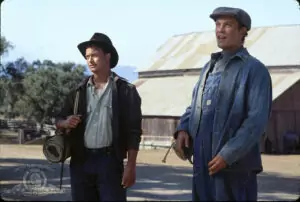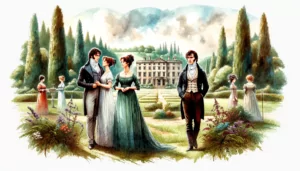By Johannes Helmold

✅ AI Essay Writer ✅ AI Detector ✅ Plagchecker ✅ Paraphraser
✅ Summarizer ✅ Citation Generator
William Blake—poet, engraver, painter, and philosopher—was a true iconoclast. Though he is often regarded as a seminal figure of the Romantic Age, many scholars believe he was beyond this label and is unique in his place in history. In order to unravel more about this extraordinary person, I will provide details about his life and work.
Born in Soho, London, on November 28th, 1757, William Blake with the third of seven children (Bentley, Gerald Eades). He only attended school until he was 10 years old, learning to read and write, and was educated at home by his mother, Catherine Blake (Raine, Kathleen). Young Blake was baptized in the same year he was born on December 11th, and the Bible became a significant text of inspiration throughout his life.
Blake’s father bought him drawings of Greek antiquities, and he began to engrave copies of them. From these drawings, Blake got familiar with classical work by such artists as Michelangelo, Maarten van Heemskerck, and Albrecht Dürer. The main reason Blake was pulled out of standard schooling at the age of ten was his headstrong character. His parents enrolled him at Henry Pars’ Drawing School at the Strand. On Blake’s own volition, he read copious amounts of books on subjected he adored. He was especially interested in poetry, with his early poetry reflecting his reading of Ben Jonson, Edmund Spenser, and the Psalms (Wilson, Mona).
In August of 1772, Blake became the apprentice of engraver James Basire for an agreed term of seven years. When this term ended, Blake was 21 years old, and was regarded as a professional engraver. During his apprenticeship, Blake was sent off to copy images from Gothic churches in London (Bentley, Gerald Eades). While working in Westminster Abbey, he began to form his own unique style and ideas. He is also said to have had visions there, specifically of Christ and his apostles (Wilson, Mona). These visions, among others throughout his life, would inspire and create context for his later engravings and poetry. In addition to his work on Gothic churches, “Booksellers employed him to engrave illustrations for publications ranging from novels such as Don Quixote to serials such as Ladies’ Magazine” (Poetry Foundation).
Besides being an apprentice of engraving, he was also a student of the Royal Academy in Old Somerset House beginning from October of 1779. He was lucky enough to not have to pay for his studies, but was still required to pay for all his materials (Churton, Tobias). Yet, as in standard school, he rebelled against what the teachers taught. He was not fond of the unfinished style championed by the Academy’s president, Joshua Reynolds. Blake preferred the exciting nature of Michelangelo’s and Raphael’s paintings. Despite Blake being against the ideas and practices of his primary teacher, he exhibited his works at the Royal Academy six times between 1780 and 1808.
As a side note, in 1780, Blake was in the front lines of the Gordon Riot. A mob had stormed Newgate Prison in response to a parliamentary bill taking away sanctions on Roman Catholicism. The Gordon Riot prompted George III to create a great amount of legislation, resulting in the creation of the first police force in England (Gilchrist, A).
1782 was a romantic year for Blake. He met Catherine Boucher, they immediately hit it off, and he proposed to her quickly. They got married on the 18th of August in 1782, since Catherine was illiterate, she signed the marriage certificate with “X.” In time, Blake taught his wife to read and write, and also trained her in engraving. Throughout Blake’s life, Catherine maintained his health and assisted him with his many creative projects (Thomas Wright).
A year after his marriage, Blake printed his first collection poetry, Poetical Sketches (Tate Publishing). And in the following year, Blake, along with friend James Parker, opened a print shop (Ackroyd, Peter). At this time, Blake got acquainted with many prominent people of the era, such as Joseph Priestley, Richard Price, John Henry Fuseli, Mary Wollstonecraft, Thomas Paine, William Wordsworth, and William Godwin. Also in 1784, Blake wrote the unfinished manuscript of An Island in the Moon, a prose satire.
However, the print shop did not do well, and his brother, Robert, soon fell seriously ill and passed away. He was very close to his brother, and “…even announced that it was Robert who informed him how to illustrate his poems in “illuminated writing.” Blake’s technique was to produce his text and design on a copper plate with an impervious liquid. The plate was then dipped in acid so that the text and design remained in relief. That plate could be used to print on paper, and the final copy would be then hand colored” (Poetry Foundation).
Around 1788, Blake used this method for There is No Natural Religion and All Religions are One, which led to development of plates for poems in a collection called Songs of Innocence in 1789. This volume was added onto with Songs of Experience in 1794. Together, they became some of Blake’s most famous work, and contains some of Blake’s most referred-to poems. These two volumes were “the two Contrary States of the Human Soul” and Blake intended for these collections to be read together. According to the Poetry Foundation:
Blake presents two sides of his view of the poet in these introductory poems. Neither one should be dismissed in favor of the other. The poet is both a pleasant piper playing at the request of his audience and a stern Bard lecturing an entire nation. In part this is Blake’s interpretation of the ancient dictum that poetry should both delight and instruct. More important, for Blake the poet is a man who speaks both from the personal experience of his own vision and from the “inherited” tradition of ancient Bards and prophets who carried the Holy Word to the nations. (Poetry Foundation)
Blake’s peak was apparent, with yet another illustrated book created in 1789 called The Book of Thiel, which also plays with the idea of the connection between innocence and experience. In the backdrop of Blake’s prolific production was the storming of the Bastille in Paris that year. The poet responded by writing Tiriel, which traces the plummet of a tyrannical king, reflecting the shock waves that were sent by the French Revolution into England. From dinner conversations to printed word, Blake was clearly passionate about politics. He even wrote a poem in seven books called The French Revolution, but not all these books have been found (Poetry Foundation).
Moving away from European politics, Blake composed a poem in 1793 called America. It is mostly a commentary on how revolutions can be created. He likens America’s revolution to England’s. And yet another radical publication of his around this time is the Marriage of Heaven and Hell, which focuses on satirizing the relationship between church and state, and modern-day philosophers. Some people might confuse his writing as a promotion for anarchy, though his intent was to show a balance of life. Works such as these only spurred most people to think of him as a madman, however (Poetry Foundation).
From 1790, the Blakes lived on Poland Street overlooking the Thames for ten years. It was here that he earned a large-scale reputation as an engraver and received constant commissions. This engraving work compensated his sales from his poetry books. Besides, he did not print that many copies of his books, and printed them more on demand (Poetry Foundation).
Other than politics and philosophy, he also commented on sexual freedom in his poetry. With Visions of the Daughters of Albion in 1793, Blake was possibly inspired by Mary Wollstonecraft’s essay A Vindication of the Rights of Woman. This masterpiece by Wollstonecraft “sets out on a seemingly super-simple mission: to explain how men and women are totally equal beings. Yeah, this should be simple, but Wollstonecraft was pitting herself against super closed-minded thinkers who were under the impression that women and men were almost two different animals. Men were freethinkers that could rule and change the world (or at least, y’know, have a job) and women were… pretty objects that could (bonus!) bear children” (Shmoop).
Through 1793 to 1795, Blake worked on what became known as the “Minor Prophecies.” In Europe (1794), The First Book of Urizen (1794), The Book of Los (1795), The Song of Los (1795), and The Book of Ahania (1795), Blake created his own mythology. According to the Poetry Foundation, with these poems, “Blake examines the fall of man. In Blake’s mythology man and God were once united, but man separated himself from God and became weaker and weaker as he became further divided. Throughout the poems Blake writes of the destructive aspects of this separation into warring identities” (Poetry Foundation). Within these mythologies, the war between France and England at the time gets mentioned often. In fact, the Minor Prophecies are mainly written as political commentary rather than a creative work of fantasy.
Concurrently, Blake was writing lone poems that concentrated on humanity’s fall from grace. The Four Zoas, subtitled “The Torments of Love and Jealousy in the Death and Judgement of Albion the Ancient Man,” represents England as a country and humanity as a whole. It is obvious that Blake enjoyed mixing religious commentary with political commentary (Poetry Foundation).
Though Blake was highly productive during the 1790s, he had quite a small readership, and responses to his art were mixed. However, as was previously stated, he gained fame as an engraver. The important commission he received was most likely for Edward Young’s Night Thoughts in 1795. Though these commissions did not make a great deal of money, he seemed indifferent to financial woes. If he could not make certain payments, he asked his patrons and friends for aid. Yet, Blake, being a radical, often got in heated exchanges with those who were able to support him. He was not one who enjoyed following rules when it came to art, and many of his patrons, or would-be patrons, tried in vain to make Blake conform to popular aesthetics (Poetry Foundation).
William Hayley was a patron that affected Blake significantly. The Blakes even moved to the village of Felpham in 1800 to be near him, as the poet got commissions under his patronage. According to the Poetry Foundation, “Blake began work on a series of eighteen “Heads of the Poets” for Hayley’s library and worked on the engravings for Hayley’s Life of Cowper (1802). Hayley also set Blake to work on a series of small portraits, but Blake soon bristled under the watchful eye of his patron” (Poetry Foundation). Hayley did not want Blake to write his spiritual poetry, and prompted him to work on portrait painting. Fed up, in 1803, the Blakes left Felpham for London. His annoyance with Hayley seemed to inspire his work Milton, which was finished around 1808, with all its writing and engraving. The Poetry Foundation details the poem as such: “Its ostensible subject is the poet John Milton, but the author, William Blake, also creates a character for himself in his own poem. Blake examines the entire range of mental activity involved in the art of poetry from the initial inspiration of the poet to the reception of his vision by the reader of the poem. Milton examines as part of its subject the very nature of poetry: what it means to be a poet, what a poem is, and what it means to be a reader of poetry.” Blake essentially warns artists about the act of chasing after being fashionable in one’s creativity (Poetry Foundation).
After moving back to London, he went to trial over a false claim of saying words against the king to a soldier and assaulting the soldier. Blake’s former patron had to help him financially through the trial. Eventually, no charge was put against Blake, but he got his word in by writing the epic poem Jerusalem, which is accompanied by one hundred illustrated plates. It took him 16 years to fully complete this epic. According to the Poetry Foundation, within Jerusalem, “Blake develops his mythology to explore man’s fall and redemption. As the narrative begins, man is apart from God and split into separate identities. As the poem progresses man’s split identities are unified, and man is reunited with the divinity that is within him” (Poetry Foundation).
In addition, Blake created an engraving to accompany Chaucer’s Canterbury Tales around this time, which ultimately resulted in the Descriptive Catalogue. This book of criticism was well-received and is often anthologized as classic Chaucer criticism (Blunt, Anthony). Also, around 1808, Blake wrote a set of annotations called Discourses, which claims that the Royal Academy is a fraudulent institution (Lorenz, Eitner).
In 1818, aged 65, Blake began working on illustrations for the Book of Job, which was admired by new age artists such as John Ruskin and Vaughan Williams. Though these artists enjoyed Blake’s work, most people who bought his work, especially later in his life, did so as a friend rather than an admirer of his art. Though Blake sold many of his works in his later years, it seemed to be done out of pity rather than on merit.
Blake’s final project was producing a set of engravings for Dante’s Divine Comedy for the artist John Linnel in 1826. With Blake’s death in 1827, the project was cut short, and only seven watercolors were finished. However, David Bindman, in the The Cambridge Companion to William Blake, notes that “The Dante watercolours are among Blake’s richest achievements, engaging fully with the problem of illustrating a poem of this complexity. The mastery of watercolour has reached an even higher level than before, and is used to extraordinary effect in differentiating the atmosphere of the three states of being in the poem” (Bindman, David). It is said that he spent his last few shillings on purchasing a pencil to finish his sketching for this work.
Blake’s final years were lived at Fountain Court off the Strand, and on the day of his death, (12 August, 1827) he was working intensely on his illustrations for the Dante series. He ceased working, and told his wife he would create a portrait of her. After it was completed, he began to sing hymns and verses, knowing he was near death. He died at six in the evening, promising his wife he would be with her always (Gilchrist, A.). George Richmond, a painter, gave the following account of Blake’s death: “He died … in a most glorious manner. He said He was going to that Country he had all His life wished to see & expressed Himself Happy, hoping for Salvation through Jesus Christ—just before he died His Countenance became fair. His eyes Brighten’d and he burst out Singing of the things he saw in Heaven” (Grigson).
William Blake was an enigmatic painter, engraver, and poet that was appreciated little in his lifetime, but now admired the world over for his energetic, revolutionary, and inspired visions of art and written word. Some called him a saint, and some called him a sinner. But like many visionary people, Blake was only truly understood and cared for by audiences after his lifetime. Blake changed art and poetry forever, and it is difficult to imagine that his works will ever be forgotten.
References
Bentley, Gerald Eades and Bentley Jr., G. William Blake: The Critical Heritage. 1995, pp. 34–5.
Raine, Kathleen (1970). World of Art: William Blake. Thames & Hudson. ISBN 0-500-20107-2.
Wilson, Mona (1978). The Life of William Blake (3rd ed.). London: Granada Publishing Limited. p. 3. ISBN 0586082972.
Churton, Tobias (16 April 2015). “Jerusalem!: The Real Life of William Blake.” Watkins Media. Retrieved 18 November 2017 – via Google Books.
Gilchrist, A. The Life of William Blake, London, 1842, p. 30.
Thomas Wright. Life of William Blake, Kessinger Publishing, 2003.
Poetical Sketches. Reproduction of 1783 edition: Tate Publishing, London, ISBN 978-1-85437-768-5.
Ackroyd, Peter. Blake, Sinclair-Stevenson, 1995, p. 96.
William Blake. (n.d.). Poetry Foundation. Retrieved December 22, 2017, from https://www.poetryfoundation.org/poets/william-blake. *
Shmoop Editorial Team. “A Vindication of the Rights of Woman.” Shmoop, Shmoop University, 11 Nov. 2008, www.shmoop.com/a-vindication-of-the-rights-of-woman/.
Blunt, Anthony. The Art of William Blake, p 77.
Lorenz Eitner, ed. Neoclassicism and Romanticism, 1750–1850: An Anthology of Sources and Documents (New York: Harper & Row/Icon Editions, 1989), p. 121.
Bindman, David. “Blake as a Painter” in The Cambridge Companion to William Blake, Morris Eaves (ed.), Cambridge, 2003, p. 106.
Grigson, Geoffrey. Samuel Palmer: The Visionary Years. K. Paul; First edition, 1947.
Follow us on Reddit for more insights and updates.





Comments (0)
Welcome to A*Help comments!
We’re all about debate and discussion at A*Help.
We value the diverse opinions of users, so you may find points of view that you don’t agree with. And that’s cool. However, there are certain things we’re not OK with: attempts to manipulate our data in any way, for example, or the posting of discriminative, offensive, hateful, or disparaging material.